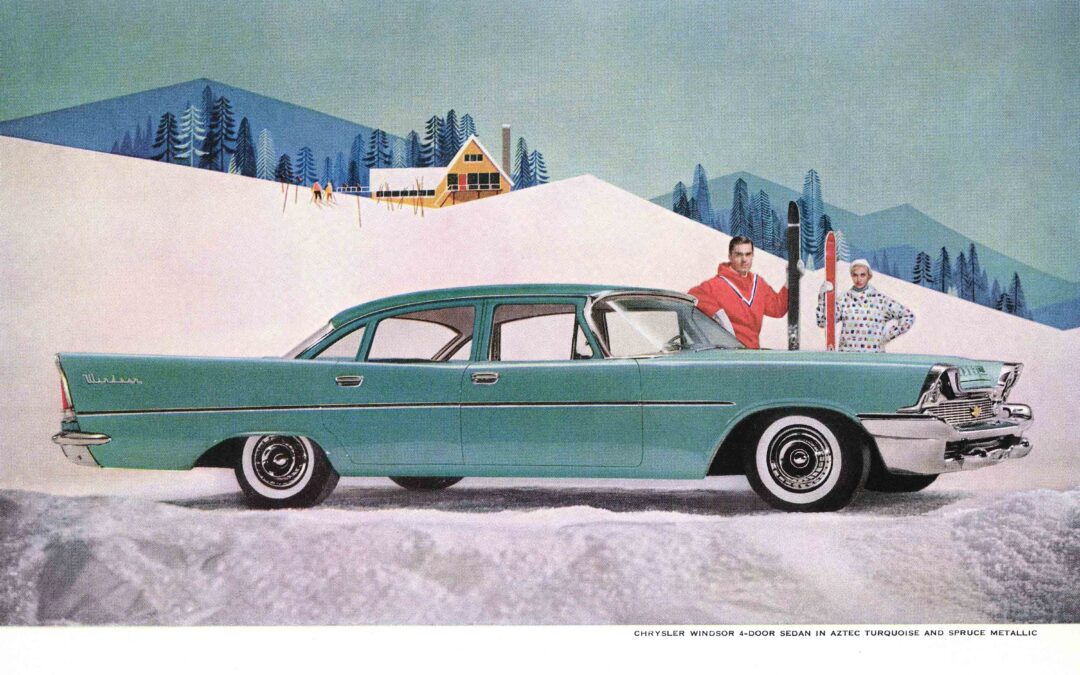In 1959, Chrysler advertised the Windsor’s new wedge-head “B” engines as ‘Golden Lions’ and the cars as ‘Lion Hearted’

The full-size Chrysler Windsor sedan was in production from 1939 through to 1961 in the U.S. and in Canada until 1966.
In 1959, Chrysler started to advertise the Windsor’s new wedge-head “B” engines as “Golden Lions” and the cars as “Lion Hearted,” according to Wikipedia.
“The RB 383-cubic-inch V8 produced 305 hp with a twin-barrel carburetor. Lions were used in the advertising, and the cars had lion emblems on the front doors and on the cylinder heads.
“In 1960, all Chrysler cars got a unibody frame. A new parking brake was also used, and the brakes on the Windsor were 11-inch drums. Air conditioning was a $510 option.
At nearly 18 feet long and 79.4 inches wide, the Windsor rode on a long wheelbase of 122 inches.
Windsor By the Numbers
In a report by ConceptCarz.com, the “Golden Lions” was part of Chrysler’s advertising campaign for the new wedge-head “B” engines. Introduced the previous year, the cars were known as “Lion Hearted.”
“The RB 383 cubic-inch V8 had five main bearings, hydraulic valve lifters, a Carter two-barrel carburetor, a cast-iron block, and delivered just over 300 horsepower.
“The Canadian-built Windsors were powered by the ‘Low Block’ 361 cubic-inch engines from the U.S.-built DeSotos and Dodges. Instead of the ‘Golden Lion’ medallion, they received three golden crests on the front doors.
Dual headlamps were standard, and the Flitesweep deck lid, stone shields, and sill moldings were optional equipment.
1960 Windsor Pricing
“Windsor body styles included a hardtop coupe priced at $3,280, a hardtop sedan at $3,345, a sedan at $3,195, and a convertible at $3,625. A six-passenger station wagon was $3,735, and the nine-passenger version listed for $3,815.
“The most popular body style was the sedan with 25,152 examples built, followed by 6,496 of the hardtop coupe, and 5,897 of the hardtop sedan.
“The convertibles and station wagons were exclusive, with 1,467 of the convertible, 1,120 of the six-passenger wagon, and 1,026 of the nine-passenger wagon constructed.”


